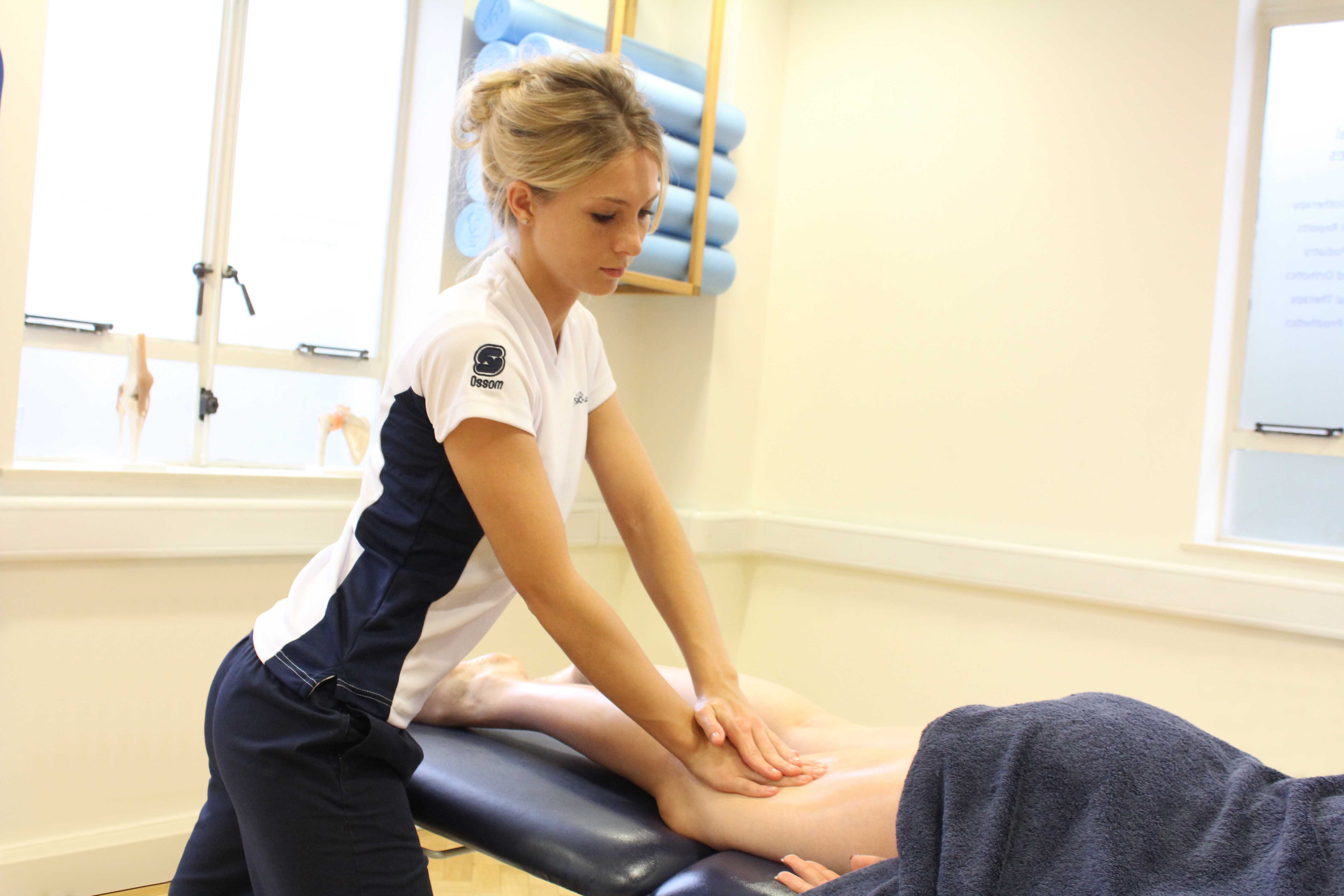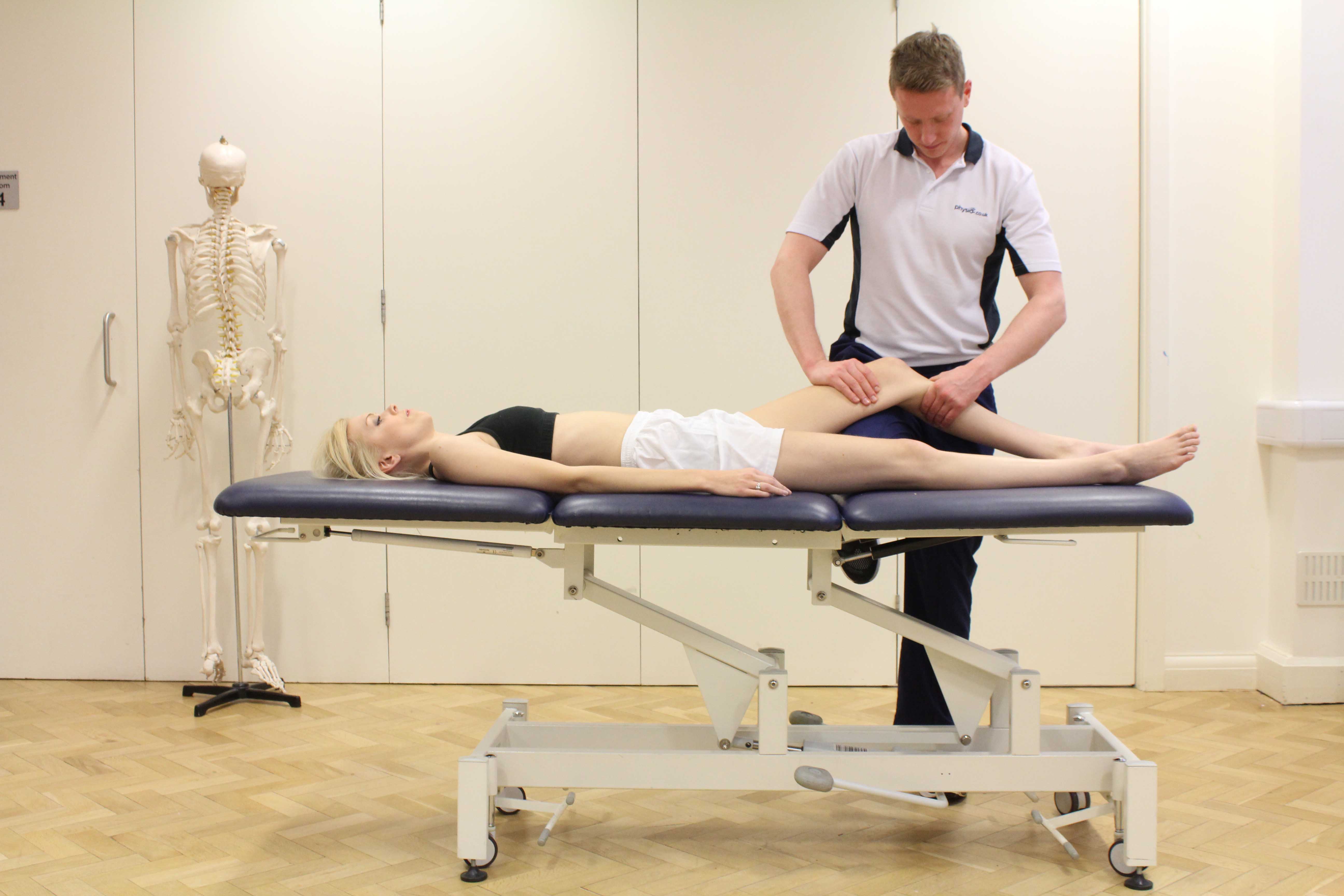What is pes anserinus bursitis?
Pes anserinus bursitis is when the pes anserine bursa becomes inflamed and painful.
A bursa is a sac of fluid which reduces friction between two structures such as muscle or bone. The pes anserine bursa is on the inside of the shin bone (tibia) just below the knee joint. It is between three muscle tendons (gracilis, sartorius and semi tendinosis) and a ligament on the inside of the knee (medial collateral ligament). Bursitis is when a bursa becomes inflamed and painful, so pes anserinus bursitis is when the pes anserine bursa becomes inflamed.
 Above: Therapist performing soft tissue massage on the tissues aound the knee
Above: Therapist performing soft tissue massage on the tissues aound the kneeHow does pes anserinus bursitis happen?
Repeated movements that use the three tendons (gracilis, sartorius and semi tendinosis) can put pressure on the pes anserine bursa. These can occur during sporting activities such as running, golf or basketball. If this happens frequently then the bursa can become inflamed and cause pain. There are some factors that can increase the chances of pes anserine bursitis occurring. These can include:
- Injury to the ligament on the inside of the knee (medial collateral ligament)
- Osteoarthritis of the knee
- Flat feet causing biomechanical problems
- Obesity
- Diabetes
What are the symptoms of pes anserinus bursitis?
Symptoms of pes anserinus bursitis will build up gradually over time as there is no sudden onset. Symptoms may include:
- Pain on the inside of the knee and/or upper inside of the shin bone (tibia)
- Swelling on the inside of the knee and/or upper inside of the shin bone (tibia)
- The inside of the knee and/or upper inside of the shin bone (tibia) is tender to touch
What should I do if I have pes anserinus bursitis?
If you have or suspect you have pes anserinus bursitis, a physiotherapist will be able to relive pain and prevent the problem occurring in the future. In the meantime you can apply ice to the affected area using a bag of frozen peas or crushed ice wrapped in a damp cloth for 15–20 minutes over the affected area every 1–2 hours.
 Above: Therapist performing knee assessment
Above: Therapist performing knee assessmentWhat shouldn’t I do if I have pes anserinus bursitis?
If you have or suspect you have pes anserinus bursitis, you should stop the activities that cause you pain. These are likely to be sporting activities and it is best to stop them to give the bursa a chance to settle down so that it can heal and treatment can be provided.
Physiotherapy treatment for pes anserinus bursitis.
Physiotherapy can treat pes anserinus bursitis and help to prevent it occurring in the future. Treatment may include:
- Stretching exercises
- Strengthening exercises
- Biomechanical treatment such as gait (walking) re-education or orthotics such as insoles
- Education for future activity and exercise
Could there be any long-term effects from pes anserinus bursitis?
If it is properly diagnosed and treated, pes anserinus bursitis generally does not produce any long-term effects. Physiotherapy treatment will also include advice to help prevent any future re-occurrence.
Please call Physio.co.uk on 0330 088 7800 to arrange an appointment or book online today.

 0330 088 7800
0330 088 7800

































